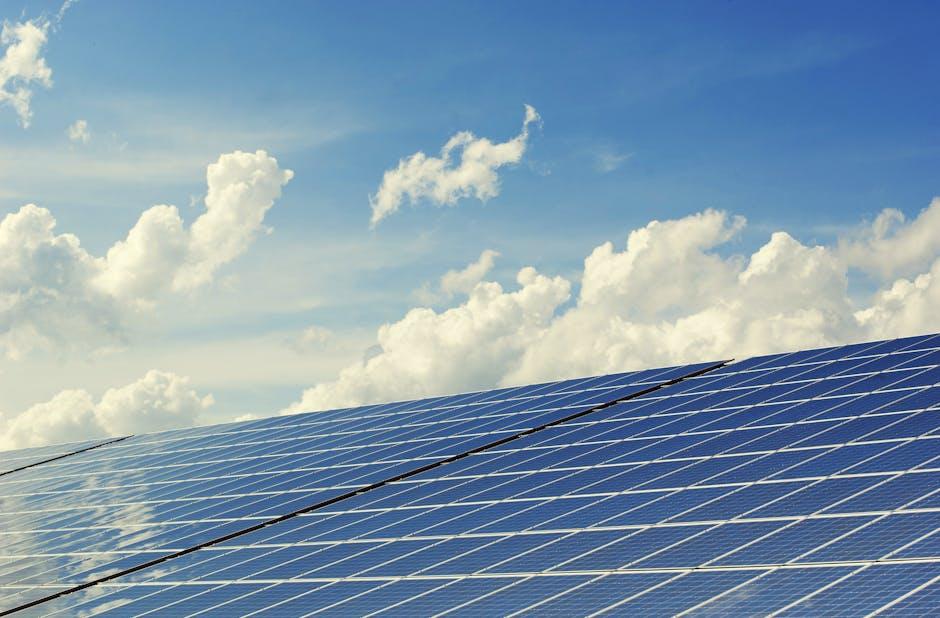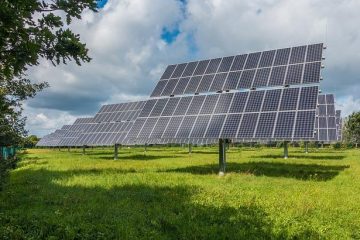Table of Contents
- Harnessing the Sun: The Benefits of Solar Power for Your Home
- Understanding Solar Panel Efficiency and Maintenance
- Cost Breakdown: Is Installing Solar Panels Worth the Investment
- Navigating Government Incentives for Residential Solar Systems
- Choosing the Right Solar Provider: Tips for a Successful Installation
- Q&A
- In Retrospect


Harnessing the Sun: The Benefits of Solar Power for Your Home
Switching to solar energy is a powerful step towards sustainability and cost savings. One of the primary advantages is the significant reduction in electricity bills. By installing solar panels, households can generate their own power, thereby cutting down reliance on traditional, and often more expensive, electricity sources. In many cases, surplus energy produced during peak sunlight hours can be sold back to the grid, a benefit known as net metering, which not only aids in energy independence but also offers a potential revenue stream.
- Environmental Impact: By investing in solar technology, homes contribute to a drastic reduction in carbon footprint.
- Energy Efficiency: Solar panels are a step toward enhancing the energy efficiency of houses.
- Incentives: Various government schemes and tax incentives are available to promote the adoption of solar energy in residential areas.
| Benefit | Description |
|---|---|
| Reduction in Costs | Lower monthly energy bills and long-term savings. |
| Solar Incentives | Access to rebates and credits reducing initial costs. |
| Property Value | Potential increase in home value and marketability. |
Aside from the financial aspects, integrating solar panels enhances a home’s intrinsic value. As potential buyers increasingly prioritize sustainable features, a solar-equipped dwelling can command higher market prices. This eco-friendly upgrade not only boosts appeal but also aligns with modern energy narratives, making properties more attractive to future-forward occupants.
Understanding Solar Panel Efficiency and Maintenance
Efficiency in solar panels is a critical factor to consider when harnessing sunlight for your home. This term describes the portion of sunlight successfully converted into usable electricity. Current technologies offer a range of efficiencies, typically between 15% and 22%. The increased efficiency often aligns with higher costs, but investing in efficient panels can prove beneficial over time. Factors affecting efficiency include the type of solar cells—such as monocrystalline or polycrystalline—and environmental conditions like temperature and shading.
- Monocrystalline: Typically more efficient and space-conserving but more expensive.
- Polycrystalline: Generally less costly and slightly less efficient, requiring more space.
- Thin-film: The least efficient but lightweight and flexible, ideal for unique applications.
Proper maintenance is crucial for extending the lifespan of solar panels and ensuring optimal performance. Regular cleaning, typically every six months, prevents debris and dust accumulation that can decrease efficiency. Inspecting connections and mounts helps avoid potential energy loss due to electrical issues or damage. Here’s a simple checklist to guide your maintenance routine:
| Task | Frequency |
|---|---|
| Clean panels | Bi-annually |
| Inspect electrical connections | Annually |
| Check mounts and seals | Annually |


Cost Breakdown: Is Installing Solar Panels Worth the Investment
Investing in solar panels for your home can be a significant financial decision. Before taking the plunge, it’s essential to consider various costs and potential savings. Initially, you’ll be faced with the upfront costs which include the purchase of the panels, installation fees, and any necessary permits. While these costs can vary depending on your location and the size of your home, many homeowners find that the long-term savings on energy bills and potential tax incentives make it a worthy investment.
- Equipment Costs: The actual panels and their supporting infrastructure.
- Installation Fees: Professional labor to ensure proper setup.
- Permits and Taxes: Various local regulations and possible subsidies.
| Expense Type | Approximate Cost (USD) |
|---|---|
| Solar Panels | $10,000 – $25,000 |
| Installation | $5,000 - $10,000 |
| Permits & Taxes | $500 – $2,500 |
Beyond the initial spending, consider the ongoing savings. Many homeowners enjoy a noticeable reduction in monthly energy bills. Moreover, solar panels can increase the value of your home, potentially offering a great return on investment when the time comes to sell. Additionally, numerous incentives are available—federal and state tax credits, rebates, and even performance-based incentives. These can offset some of the initial costs, making the financial side of the equation more favorable over time.


Navigating Government Incentives for Residential Solar Systems
- Consult with your solar provider about the local incentives and their experience with applications.
- Use online resources or government portals to stay updated on the latest incentive programs and changes.
- Engage with communities or online forums focused on residential solar systems to learn from other homeowners’ experiences.
| Incentive Type | Benefit Overview |
|---|---|
| Federal Tax Credit | Reduces federal taxes based on installation costs |
| State Rebates | Direct cash paybacks for installation projects |
| Net Metering | Credit for excess energy fed back into the grid |


Choosing the Right Solar Provider: Tips for a Successful Installation
When planning to install solar panels on your home, selecting the right provider is crucial for ensuring a seamless and successful transition to renewable energy. Start by conducting thorough research on potential companies by checking their track record and customer reviews. It’s essential to verify the credentials, including licenses and certifications, which demonstrate their commitment to quality standards. Moreover, consider the years of experience in the solar industry, as more seasoned companies often have better resilience in addressing issues that may arise during and after installation.
- Inquire about warranties and guarantees: Reliable providers should offer long-term warranties on both their products and installation services.
- Ask for case studies or references: Understanding past projects can provide insights into their expertise and customer satisfaction.
- Seek personalized consultation: A reputable company should offer tailored advice and solutions that match your home’s specific energy needs and goals.
Cost is a significant factor in determining the right provider, but it’s crucial not to overlook the value of expertise and quality. Request detailed quotes from several providers, ensuring they break down the costs of equipment, labor, and any additional fees. Here’s a sample comparison table you might consider creating to aid in your decision:
| Company | Experience (years) | Warranty (years) | Estimated Cost |
|---|---|---|---|
| Sunshine Energy | 15 | 25 | $12,000 |
| GreenTech Solar | 10 | 20 | $10,500 |
| EcoPower Solutions | 8 | 20 | $11,000 |




0 Comments